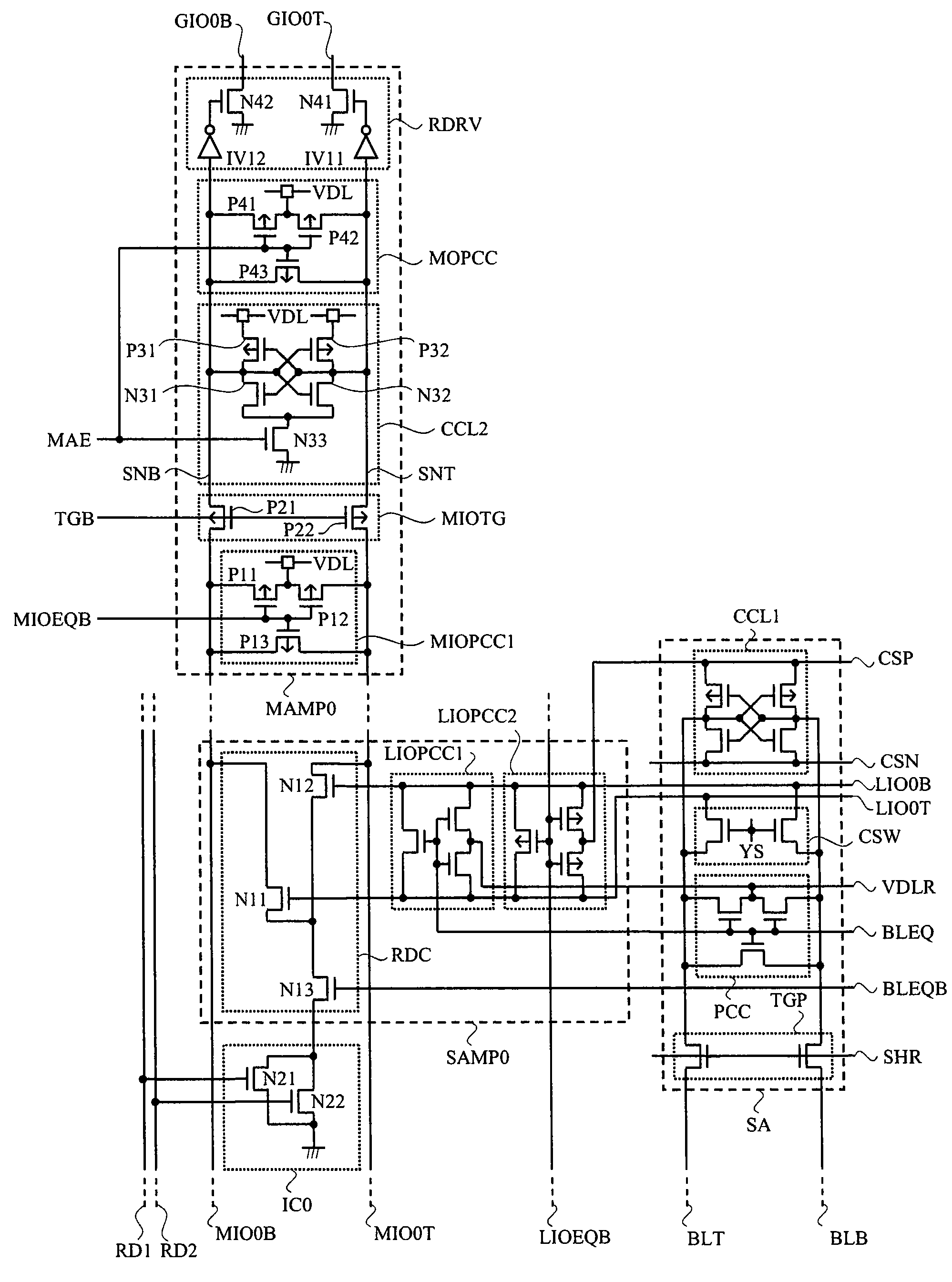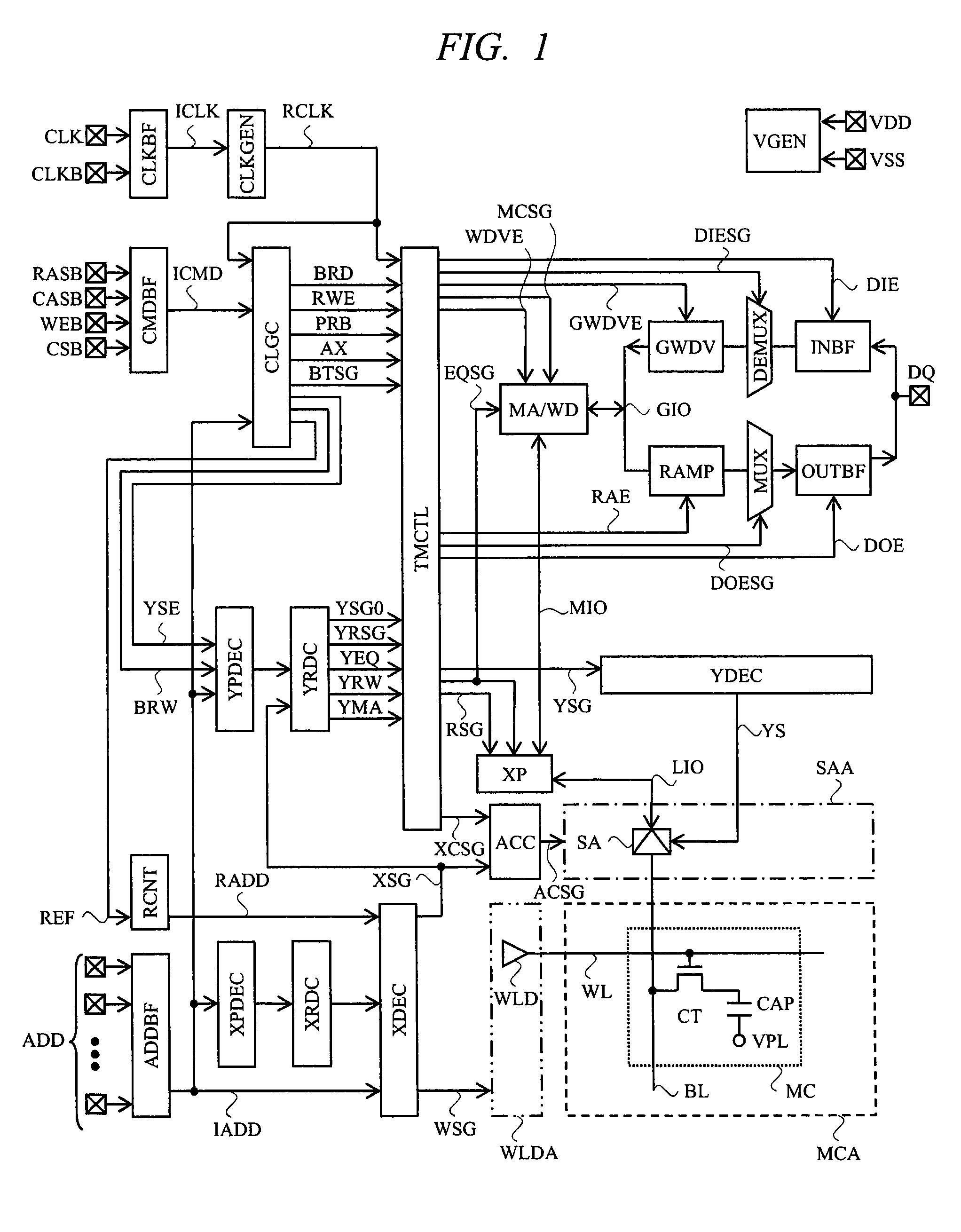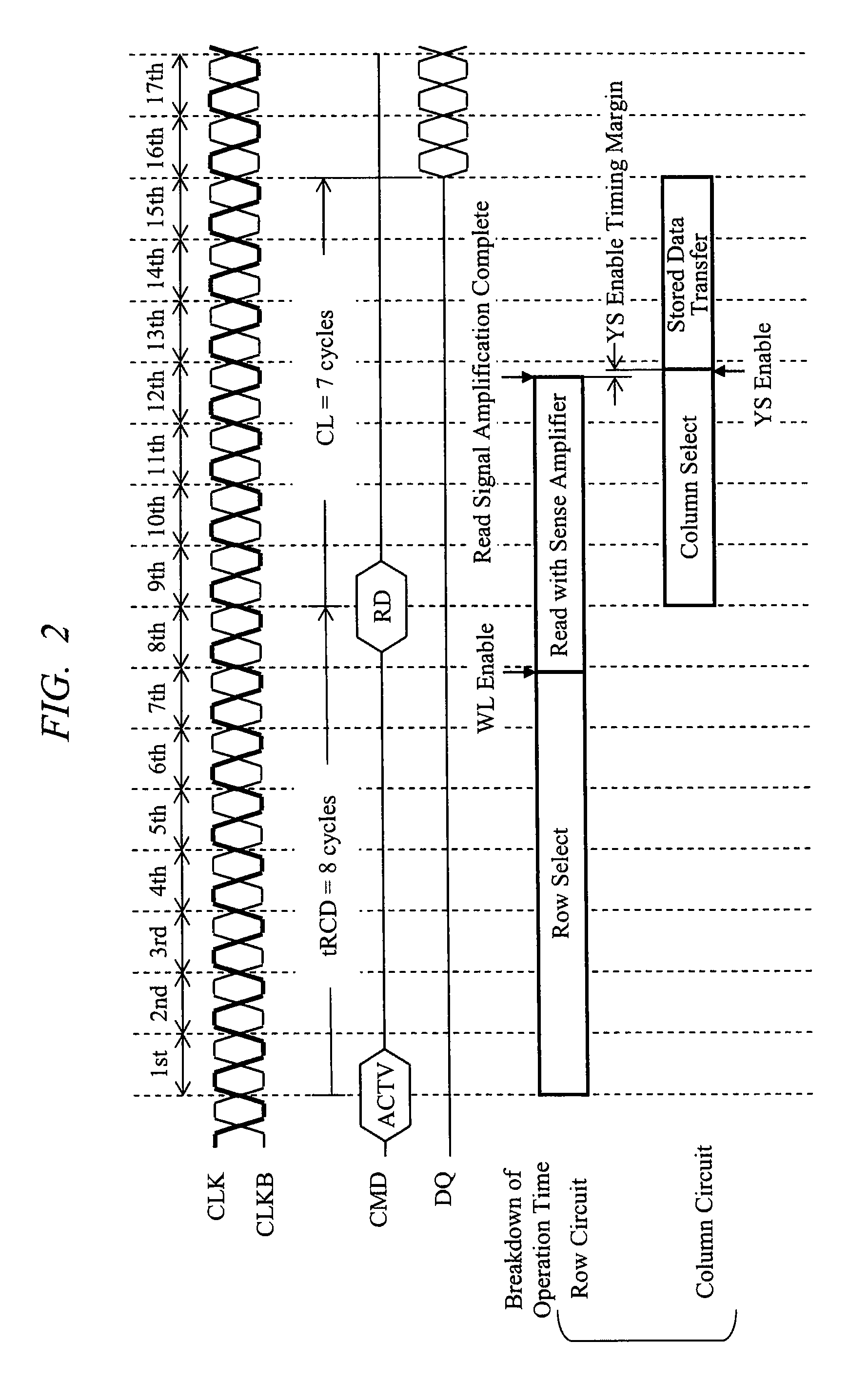Semiconductor memory device with sub-amplifiers having a variable current source
a memory device and sub-amplifier technology, applied in the field of semiconductor memory devices, can solve the problems of increasing the time required for reading stored data due to an rc delay, increasing the rc product of the bit line, and increasing the time required for reading stored data due to a delay trdb>0/b>, so as to shorten the data transfer time of the input/output line, the driving ability of the sub-amplifier is high, and the speed
- Summary
- Abstract
- Description
- Claims
- Application Information
AI Technical Summary
Benefits of technology
Problems solved by technology
Method used
Image
Examples
first embodiment
[0054]Features of the embodiment obtained from operation timing diagrams will be first described with reference to FIGS. 4 and 5. This embodiment has two major features. The first feature lies in that read circuit operation from a memory array to a main amplifier in a column circuit is speeded up. That is, circuit operation in the portion is shortened by overtime TD0 in a row circuit operation. FIG. 4 shows detailed breakdown of an optimal read operation time in the column circuit operation just after row circuit operation (so-called “page open”), in comparison with FIG. 3. TD1F represents a time required from enabling of a column select signal YS to activation of a main amplifier enable signal MAE, and the overtime TD0 is absorbed by shortening the time especially.
[0055]TD2 represents a time required from the activation of the main amplifier enable signal MAE to activation of a receiver amplifier enable signal RAE, TD3 represents a time required from the activation of a receiver am...
second embodiment
[0118]In a second embodiment, other configuration example and operation example of the current control circuit described in the first embodiment will be described.
[0119]FIG. 15 is a circuit diagram showing a configuration example of a column circuit different from that shown in FIG. 10 in a semiconductor device of the second embodiment according to the present invention. A feature of the configuration shown in FIG. 15 lies in that a current control circuit IC0A shown in FIG. 15 is composed of one NMOS transistor, which is different from the configuration shown in FIG. 10. The configuration shown in FIG. 15 is different from the configuration shown in FIG. 10 in the read enable signal is only RD12, it is connected to a gate electrode of the transistor N23, and voltage of the activated read enable signal RD12 varies according to respective burst read cycles.
[0120]FIG. 16 shows an operation timing diagram in read operation of the column circuit shown in FIG. 15. In the diagram, a read ...
third embodiment
[0124]In a third embodiment, another example of configuration and operation of the main amplifier used in the DDR SDRAM described in the first and second embodiment will be described. FIG. 19 is a circuit diagram showing a configuration example of a column circuit different from the column circuit shown in FIG. 10 and the like in a semiconductor device of the third embodiment according to the present invention. A feature of a main amplifier MAMP0A shown in FIG. 19 lies in that the main input / output line transmission gate MIOTG is removed from the circuit configuration shown in FIG. 10 and the cross-couple-type latch amplifier CCL2 is replaced with a gate input-type sense latch GIL.
[0125]The gate input-type sense latch GIL is composed of three PMOS transistors P51, P52, P53 and five NMOS transistors N51, N52, N53, N54, N55. The transistors P51, P52, N51, N52 form a positive feedback loop to amplify and hold current signals inputted from sources of the transistors N51, N52. Drains of ...
PUM
 Login to View More
Login to View More Abstract
Description
Claims
Application Information
 Login to View More
Login to View More - R&D
- Intellectual Property
- Life Sciences
- Materials
- Tech Scout
- Unparalleled Data Quality
- Higher Quality Content
- 60% Fewer Hallucinations
Browse by: Latest US Patents, China's latest patents, Technical Efficacy Thesaurus, Application Domain, Technology Topic, Popular Technical Reports.
© 2025 PatSnap. All rights reserved.Legal|Privacy policy|Modern Slavery Act Transparency Statement|Sitemap|About US| Contact US: help@patsnap.com



